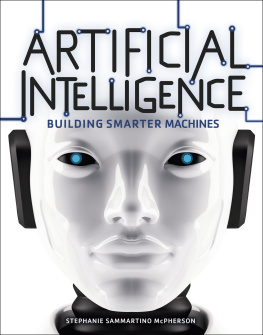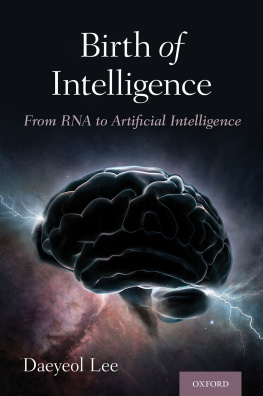Published by PublicAffairs, an imprint of Perseus Books, LLC, a subsidiary of Hachette Book Group, Inc.
All rights reserved.
No part of this book may be reproduced in any manner whatsoever without written permission except in the case of brief quotations embodied in critical articles and reviews. For information, address PublicAffairs, 1290 Avenue of the Americas, New York, NY 10104.
The Hachette Speakers Bureau provides a wide range of authors for speaking events. To find out more, go to hachettespeakersbureau.com or call 866-376-6591.
Library of Congress Cataloging-in-Publication data is available for this book.
Challenge yourselves and you will challenge the world.
I T WAS A PLEASANT DAY in Hamburg on June 6, 1985, but chess players rarely get to enjoy the weather. I was inside a cramped auditorium, pacing around inside a circle of tables upon which rested thirty-two chessboards. Across from me at every board was an opponent, who moved promptly when I arrived at the board in what is known as a simultaneous exhibition. Simuls, as they are known, have been a staple of chess for centuries, a way for amateurs to challenge a champion, but this one was unique. Each of my opponents, all thirty-two of them, was a computer.
I walked from one machine to the next, making my moves over a period of more than five hours. The four leading chess computer manufacturers had sent their top models, including eight bearing the Kasparov brand name from the electronics firm Saitek. One of the organizers warned me that playing against machines was different because they would never get tired or resign in dejection the way a human opponent would; they would play to the bitter end. But I relished this interesting new challengeand the media attention it attracted. I was twenty-two years old, and by the end of the year I would become the youngest world chess champion in history. I was fearless, and, in this case, my confidence was fully justified.
It illustrates the state of computer chess at the time that it didnt come as much of a surprise, at least not in the chess world, when I achieved a perfect 320 score, winning every game, although there was one uncomfortable moment. At one point I realized that I was drifting into trouble in a game against one of the Kasparov models. If this machine scored a win or even a draw against me, people might suggest that I had thrown the game to get publicity for the company, so I had to intensify my efforts. Eventually I found a way to trick the machine with a sacrifice it should have refused and secure my clean sweep. From the human perspective, or at least from my perspective as the human in this equation, these were the good old days of human versus machine chess. But this golden age would be brutally short.
Twelve years later I was in New York City fighting for my chess life against just one machine, a $10 million IBM supercomputer nicknamed Deep Blue. This battle, actually a rematch, became the most famous human-machine competition in history. Newsweeks cover called it The Brains Last Stand and a flurry of books compared it to Orville Wrights first flight and the moon landing. Hyperbole, of course, but not out of place at all in the history of our love-hate relationship with so-called intelligent machines.
Jump forward another twenty years to today, to 2017, and you can download any number of free chess apps for your phone that rival any human Grandmaster. You can easily imagine a robot in my place in Hamburg, circling inside the tables and defeating thirty-two of the worlds best human players at the same time. The tables have turned, as they always do in our eternal race with our own technology.
Ironically, if a machine did perform a chess simul against a room full of human professional players, it would have more trouble moving from board to board and physically moving the pieces than it would have calculating the moves. Despite centuries of science fiction about automatons that look and move like people, and for all the physical labor today done by robots, its fair to say that we have advanced further in duplicating human thought than human movement.
In what artificial intelligence and robotics experts call Moravecs paradox, in chess, as in so many things, what machines are good at is where humans are weak, and vice versa. In 1988, the roboticist Hans Moravec wrote, on intelligence tests or playing checkers, and difficult or impossible to give them the skills of a one-year-old when it comes to perception and mobility. I wasnt aware of these theories at the time, and in 1988 it was safe to include checkers but not yet chess, but ten years later it was obviously the case in chess as well. Grandmasters excelled at recognizing patterns and strategic planning, both weaknesses in chess machines that, however, could calculate in seconds tactical complications that would take even the strongest humans days of study to work out.
This disparity gave me an idea for an experiment after my matches with Deep Blue attracted so much attention. You could also call it if you cant beat em, join em, but I was eager to continue the computer chess experiment even if IBM was not. I wondered, what if instead of human versus machine we played as partners? My brainchild saw the light of day in a match in 1998 in Len, Spain, and we called it Advanced Chess. Each player had a PC at hand running the chess software of his choice during the game. The idea was to create the highest level of chess ever played, a synthesis of the best of man and machine. It didnt quite go according to plan, as well see later, but the fascinating results of these centaur competitions convinced me that chess still had a lot to offer the worlds of human cognition and artificial intelligence.
In this belief I was hardly a pioneer; a chess-playing machine has been a holy grail since long before it was possible to make one. I just happened to be the human holding the grail when it was finally in sciences grasp. I could run away from this new challenge or I could embrace it, which was really no choice at all. How could I resist? It was a chance to promote chess to a general audience beyond that reached even by Bobby Fischers Cold Warera match against Boris Spassky and my own title duels with Anatoly Karpov. It had the potential to attract a new set of deep-pocketed sponsors to chess, especially tech companies. For example, Intel sponsored a Grand Prix cycle in the mid-1990s as well as my world championship match with Viswanathan Anand in 1995, played at the top of the World Trade Center. And then there was the irresistible curiosity I felt. Could these machines really play chess at the world championship level? Could they really think?
Humans have dreamed of intelligent machines since long before the technology to attempt one was conceived. In the late eighteenth century, a chess-playing mechanical automaton called the Turk was a wonder of the age. A carved wooden figure moved the pieces and, most remarkably, played a very strong game. Before it was destroyed in a fire in 1854, the Turk toured Europe and the Americas to great acclaim, claiming among its victims the famous chess aficionados Napoleon Bonaparte and Benjamin Franklin.
Of course it was a hoax; there was a human inside the cabinet under the table, hidden by an ingenious set of sliding panels and machinery. In another irony, today chess tournaments are plagued by cheaters who access super-strong computer programs to defeat their human opponents. Players have been caught using sophisticated signaling methods with accomplices, Bluetooth headsets in hats or electrical devices in shoes, and simply using a smartphone in the restroom.













